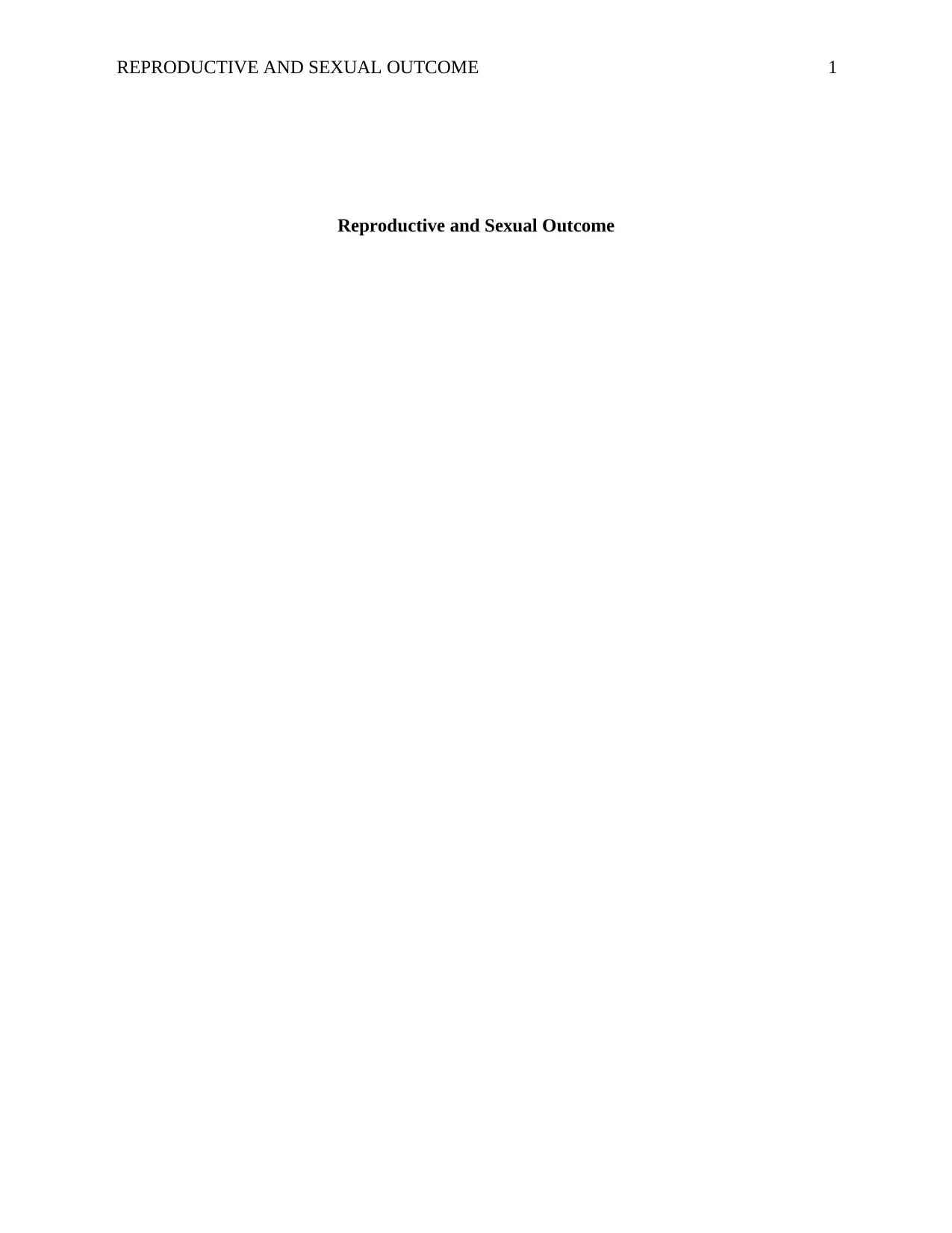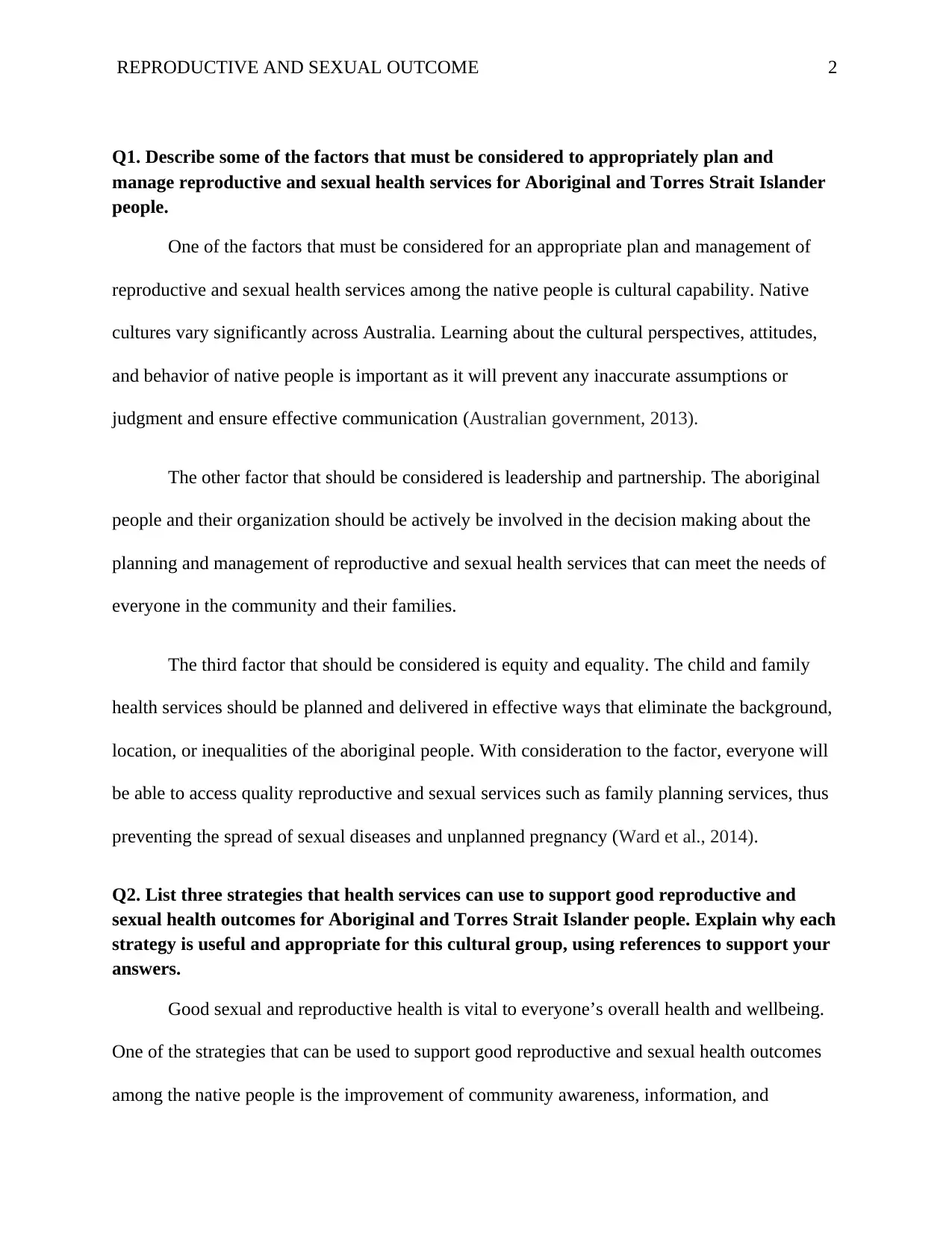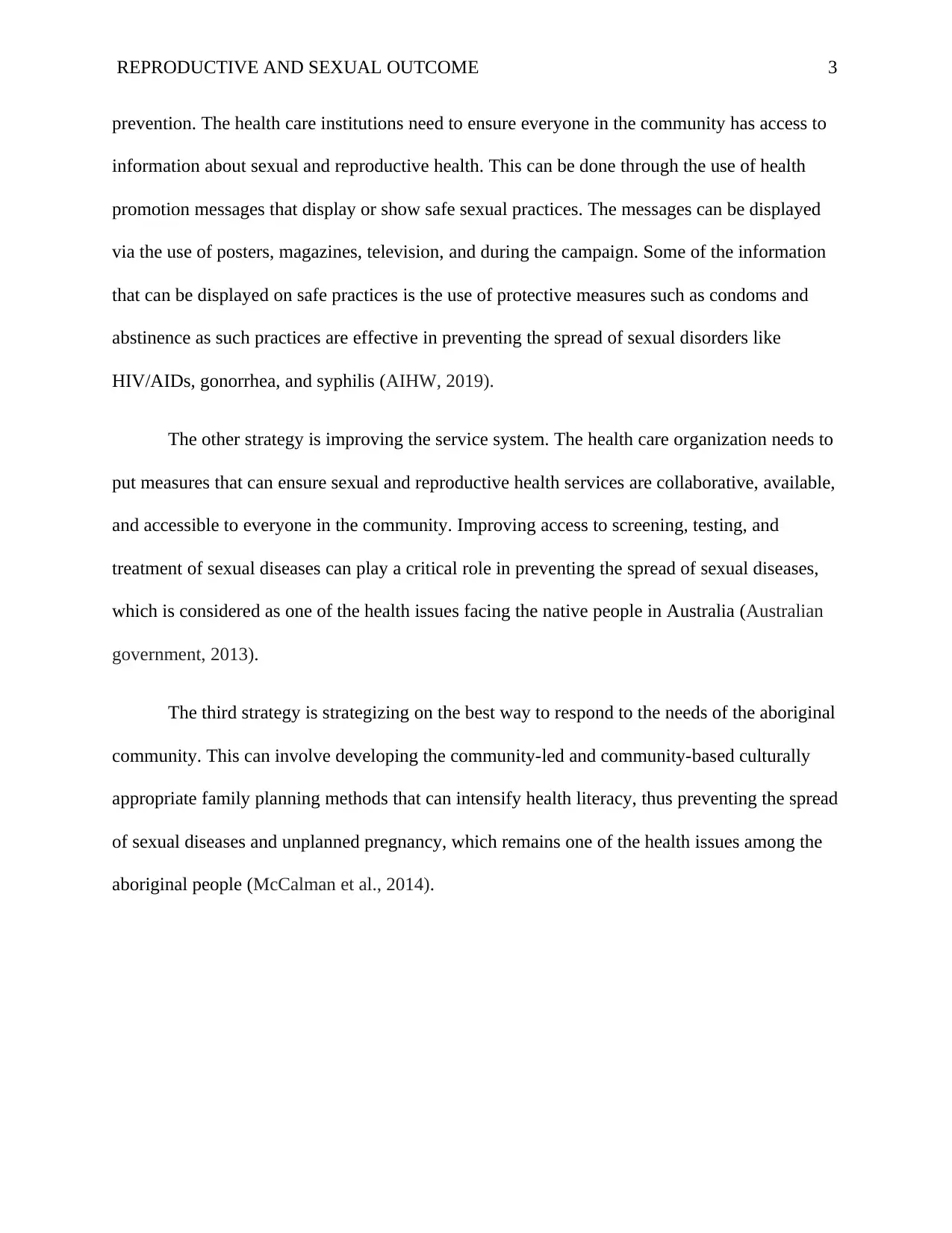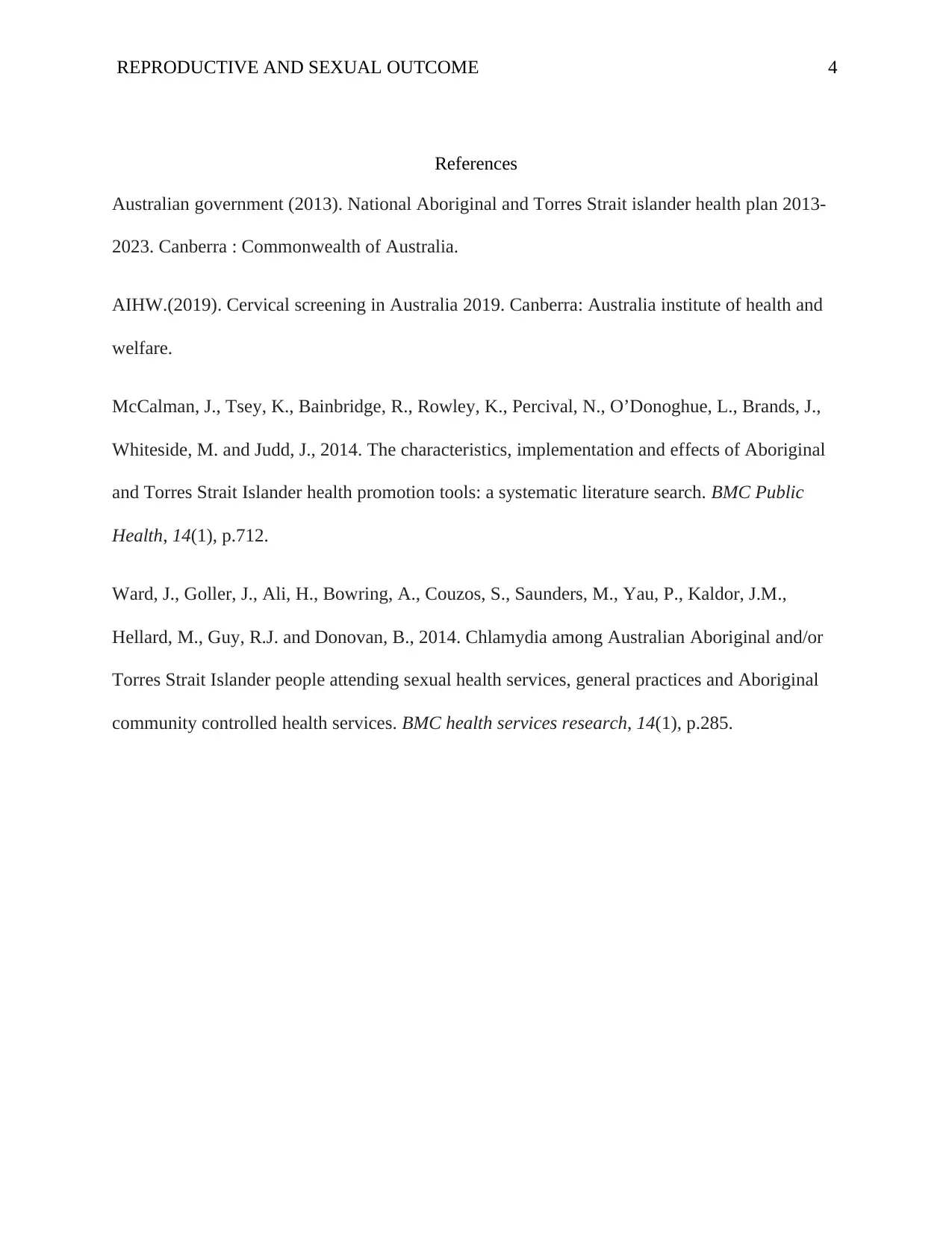Reproductive and Sexual Health for Aboriginal People - Assignment
VerifiedAdded on 2022/09/29
|4
|791
|24
Homework Assignment
AI Summary
This assignment addresses reproductive and sexual health services for Aboriginal and Torres Strait Islander people. It begins by identifying and describing crucial factors for planning and managing these services, emphasizing cultural capability, leadership and partnership, and equity and equality. The solution then outlines three key strategies to support positive reproductive and sexual health outcomes within this population. These strategies include improving community awareness, information, and prevention through health promotion, enhancing the service system to ensure accessibility and collaboration, and developing community-led and culturally appropriate family planning methods. Each strategy is explained with supporting evidence from relevant literature, focusing on preventing sexual diseases and unplanned pregnancies, which are significant health concerns for Aboriginal communities. The solution emphasizes the importance of culturally sensitive approaches to improve health outcomes.
1 out of 4











![[object Object]](/_next/static/media/star-bottom.7253800d.svg)